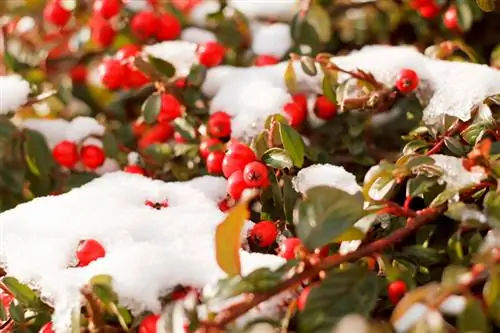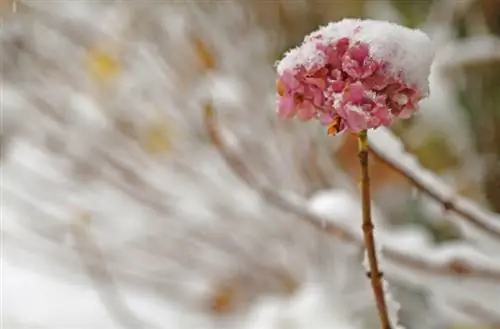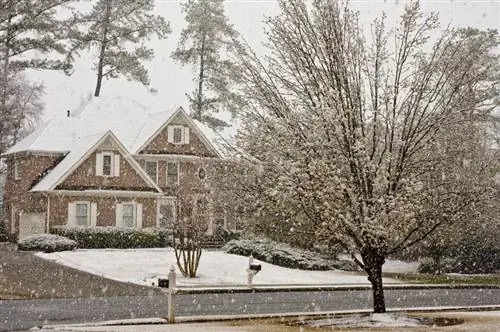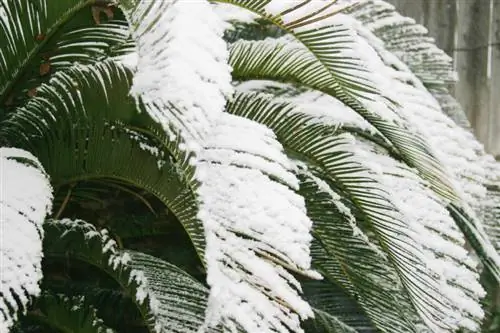- Author admin [email protected].
- Public 2023-12-16 16:46.
- Last modified 2025-01-23 11:20.
The slightly poisonous false berry is known to many plant lovers. It impresses with its foliage all year round, with its decorative berries in autumn and winter and with its flowers in summer. Can it tolerate frost or does it need winter protection?
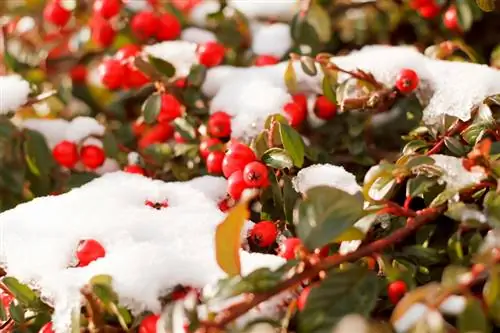
Is the mock berry hardy?
The mock berry is hardy and can easily tolerate frost down to -20 °C. It typically does not require winter protection unless temperatures fall into extreme subzero ranges. Make sure you water adequately and avoid winter wetness or drought.
She gets through the winter without protection
The false berry is part of the heather family. It is native to parts of North America, Canada and the Himalayas. Because of its homeland, it copes well with frost.
The mock berry is hardy in this country. Therefore, you do not need to protect your mock berry - whether in the open field or in a pot on the balcony - in winter. It can easily handle frost down to -20 °C.
Protect in extreme times
If the temperatures fall into extremes, winter protection is not a mistake:
- Protect new plantings in autumn as a precaution
- don't put it inside and spend the winter there (too warm)
- The following are suitable for protection: fir branches and spruce branches
- the branches also serve as protection against frost
- If grown in pots, cover it with fleece and place it on the house wall
Do not fertilize from August
It is extremely important that you do not fertilize your mock berries for too long! Fertilization should be stopped from August. If you fertilize afterwards, you prevent the shoots from maturing/woodening. Immature shoots are sensitive to frost and frost damage doesn't take long to appear.
Beware of winter wetness and dryness
Care should not be neglected even in winter. Make sure that the mock berry is not exposed to winter moisture. Drought is also deadly. If you have mock berries in the pot, check the soil regularly and, if necessary, water sparingly on frost-free days. The evergreen foliage evaporates water even in winter
The fruits grow in the winter time
The decorative fruits of the false berry appear from October onwards. They remain bright red in color until spring. They resist cold and usually do not fall off. This is what makes the mock berry such a valuable plant in winter!
Tip
A little sun in winter doesn't hurt. Quite the opposite: A portion of sun causes the evergreen foliage of the false berry to turn reddish to brownish.

